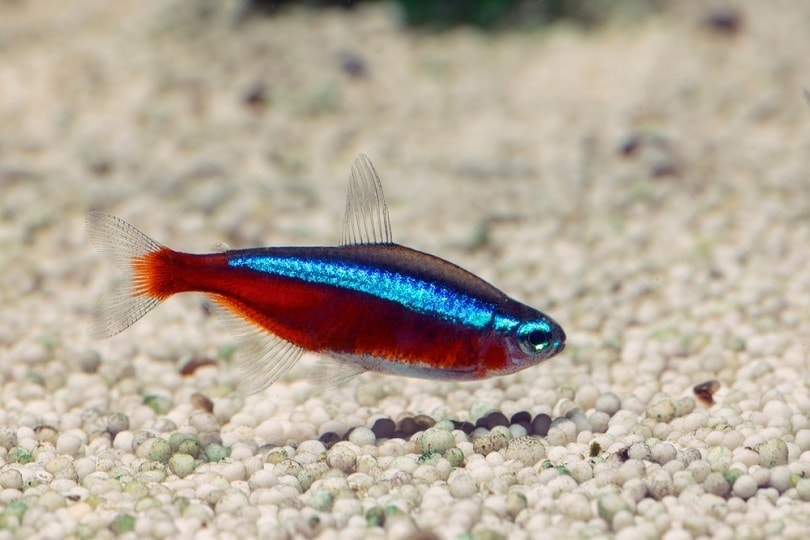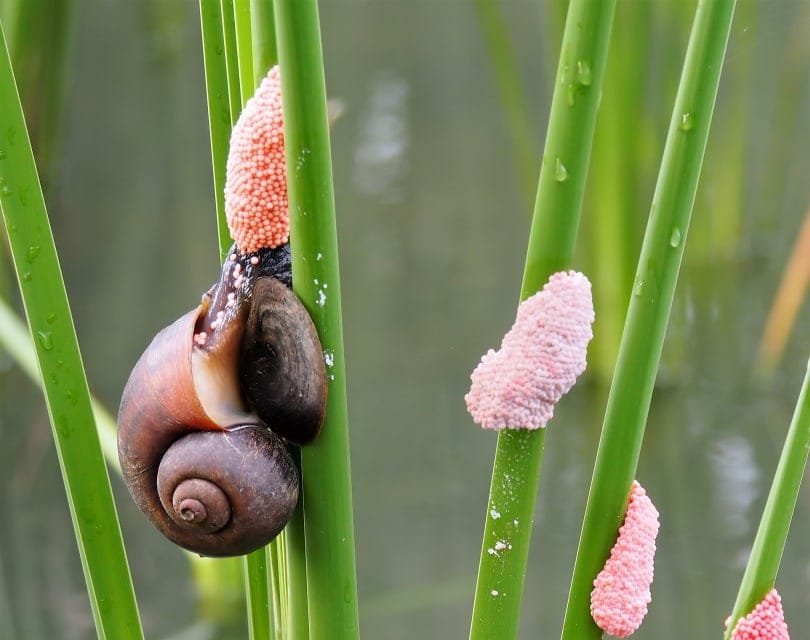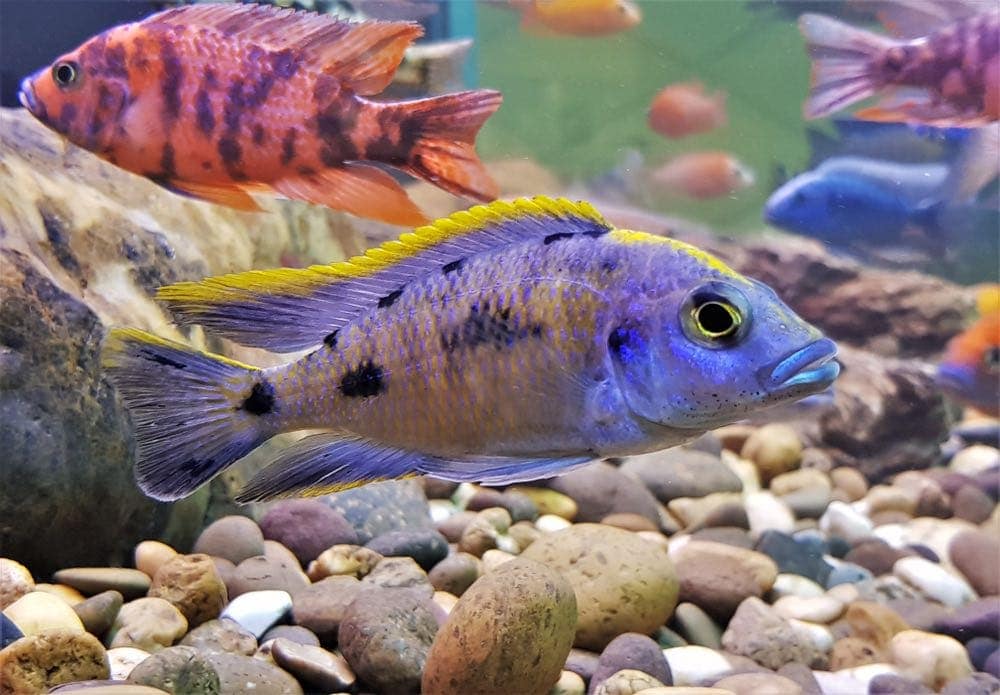10 Tank Mates for Giant Danio Fish (With Pictures)
Updated on

Click to Skip Ahead
The Giant Danio is one of the most exotic and popular Danio species for home aquariums due to their peaceful, docile nature and beautiful appearance. They are also relatively easy to care for, making them ideal for beginners. Giant Danios are best kept in schools of at least eight fish, so you’ll need a fairly large tank to house them, more so if you want to add other species.
But what fish make the best tank mates for Giant Danios? Since the fish are so peaceful and rarely aggressive, it makes sense to have tank mates who are just as peaceful and docile as Danios. In this article, we’ll look at 10 of the best tank mates for Giant Danios in your aquarium. Let’s dive in!
The 10 Tank Mates for Giant Danio Fish
1. Cory Catfish (Corydoras)

| Size: | 1–2.5 inches (2.5–6.3 cm) |
| Diet: | Omnivore |
| Minimum tank size: | 10 gallons (37.8 liters) |
| Care level: | Easy |
| Temperament: | Peaceful and calm |
Cory Catfish are hardy, easy-to-care-for fish and are a staple in most freshwater aquariums. Many Cory Catfish types vary in size and color, but any of these variations can make great tank mates for Giant Danios. They tend to stick to the bottom of the tank, where Danios rarely go, so they’ll likely stay out of one another’s space.
2. Dwarf Spotted Danio (Danio nigrofasciatus) — Great for small tanks
| Size: | 1–2 inches (2.5–5 cm) |
| Diet: | Omnivore |
| Minimum tank size: | 10 gallons (37.8 liters) |
| Care level: | Easy |
| Temperament: | Peaceful and calm |
What better tank mate for your Giant Danio than their smaller spotted cousin? The Dwarf Danio is a beautiful schooling fish with similar tank requirements to Giant Danios and is easy to care for, making them ideal tank mates. These fish enjoy plants to hide in and find safety in numbers, so you’ll need a small school of at least eight fish to avoid them being seen as prey.
3. Clown Loaches (Chromobotia macracanthus)

| Size: | 6–12 inches (15–30 cm) |
| Diet: | Omnivore |
| Minimum tank size: | 30 gallons (113.5 liters) |
| Care level: | Moderate |
| Temperament: | Social, peaceful |
Any species of loach is a great addition to your aquarium, but Clown Loaches are unique, beautiful additions in particular. They are incredibly social and can coexist peacefully with almost any fish, including Giant Danios. They are common tank mates in many home aquariums.
They are also amusing to observe because they are active during the day but tend to hide away at night.
4. Agassiz’s Dwarf Cichlid (Apistogramma agassizii)
| Size: | 2–3.5 inches (5–8.8 cm) |
| Diet: | Omnivore |
| Minimum tank size: | 15 gallons (56.7 liters) |
| Care level: | Moderate |
| Temperament: | Peaceful and calm |
Agassiz’s Dwarf Cichlids are omnivores, but in the wild, they tend toward a more carnivorous diet. This means they are great tank mates for various fish but shouldn’t be kept with smaller fish that may be seen as prey. That isn’t a problem with Giant Danios, however. Since these fish tend to stick to the bottom of the tank, where they enjoy digging into the substrate, they are great tank mates for your Danios.
5. Angelfish (Pterophyllum scalare)

| Size: | 4–6 inches (10–15 cm) |
| Diet: | Omnivore |
| Minimum tank size: | 20 gallons (75.7 liters) |
| Care level: | Easy |
| Temperament: | Peaceful |
The beautiful Angelfish has one of the most unique appearances of freshwater fish, with their iconic dorsal and pectoral fins and fan-shaped caudal fin. Provided they have plenty of space to swim, Angelfish are docile and non-aggressive, but they may see smaller fish as prey.
They prefer living in schools of six or more and make ideal tank mates for various species, including Danios.
6. Clown Pleco (Panaque maccus)

| Size: | 2-3.5 inches (5-8.8 cm) |
| Diet: | Omnivore |
| Minimum tank size: | 20 gallons (75.7 liters) |
| Care level: | Easy |
| Temperament: | Peaceful |
Plecos, in general, make great tank mates for Giant Danios, but our favorite is the Clown Pleco. This unique-looking fish is a popular addition to aquariums due to their beautiful appearance, docile nature, and easy care.
They are common tank mates for many species for these reasons, too. Since they generally stay at the bottom of the aquarium, they make lovely Danio tank mates.
7. Cardinal Tetras (Paracheirodon axelrodi)

| Size: | 1-2.0 inches (2.5-5 cm) |
| Diet: | Omnivore |
| Minimum tank size: | 20 gallons (75.7 liters) |
| Care level: | Easy |
| Temperament: | Peaceful |
The beautifully colored Cardinal Tetra is a tranquil, peaceful fish that will bring a sense of calm and peace to your aquarium. They tend to school in the presence of larger fish, like Giant Danios, and thus, they will make great tank mates.
They are one of the most popular species of small tetra fish for community aquariums because they are easy to care for and as peaceful as they come.
8. Tiger Barb (Barbus tetrazona)

| Size: | 2–3 inches (5–7 cm) |
| Diet: | Omnivore |
| Minimum tank size: | 20 gallons (75.7 liters) |
| Care level: | Easy to intermediate |
| Temperament: | Mostly peaceful, may nip at long fins |
Tiger Barbs are popular fish for freshwater aquariums because they are entertaining to watch and relatively easy to care for. Barbs live near the bottom of the aquarium, and they will stay out of the way of your Danios.
Tiger Barbs are known to be somewhat aggressive at times and nip at fish with long, flowing fins, so there is debate as to whether they should be kept in a community tank. However, if you keep them in small schools of six or more and they have the space to stay away from fish with long fins, like Danios, they are generally acceptable.
9. White Cloud Mountain Minnow (Tanichthys micagemmae)

| Size: | 1–1.5 inches (2.5–3.8 cm) |
| Diet: | Omnivore |
| Minimum tank size: | 10 gallons (37.8 liters) |
| Care level: | Easy |
| Temperament: | Peaceful |
These small schooling fish are peaceful and docile and have long been used as tank mates for a wide variety of fish. They are also hardy fish and are undemanding regarding water quality, so they are ideal for beginners.
They must be kept in schools of at least six, though preferably a dozen; otherwise, they will hide away most of the time. Large schools will also prevent your Danio from viewing them as prey!
10. Mystery Snail (Pomacea bridgesii)

| Size: | 1–2 inches (2.5–5 cm) |
| Diet: | Herbivore |
| Minimum tank size: | 5 gallons (18.9 liters) |
| Care level: | Easy |
| Temperament: | Peaceful and calm |
The Mystery Snail is an excellent addition to any aquarium because they eat algae and will help keep your tank clean and healthy. They also eat dead plants and allow trapped nutrients to be released back into the environment.
They can live happily with Giant Danios because if your Danio approaches them, they will simply hunker down in their shells. They come in various beautiful colors, including black, gold, and purple, and are certainly unique tank mates for your Danios.
What Makes a Good Tank Mate for Giant Danios?
Giant Danios are fairly active fish, and they should be kept with fish that are just as active because they can potentially stress slow swimmers. They are rarely aggressive, so they can peacefully live with a wide range of tank mates, though they will prey on any smaller fish that can fit in their mouth.
Smaller fish are safe if they are kept in schools of six or more and live in a different level of the aquarium, but there is always a chance that your Danio may snack on them.
Where Do Giant Danio Fish Prefer to Live in the Aquarium?
In general, Giant Danios don’t have too much of a preference for an aquarium level but don’t visit the bottom much and tend to stick to the middle and top levels. They prefer long, deep tanks with plenty of tall plants to swim through and hide in. Having various plants in their tank will make them feel safe.

Water Parameters
In the wild, Giant Danios are found primarily in fast-flowing streams and live in fairly large shoals. They originate in Sri Lanka, Nepal, and western India, where the water temperature is relatively moderate and not too warm.
In captivity, they’ll need a water temperature of between 72 and 82 degrees Fahrenheit (22–27 degrees Celsius) and a pH of between 6 and 8. Since their natural habitat is fast-flowing rivers, a strong filtration unit to provide water current will be welcomed by your Danio.
Size
Giant Danios have an elongated body with a torpedo-like shape and come in various colors. They are one of the largest Danio species, averaging at around 4 inches long, with some captive specimens reaching up to 6 inches in length.
Aggressive Behaviors
Giant Danios are generally peaceful, non-aggressive fish, but they are known to become territorial and aggressive if they don’t have enough space in their tank.
They can also bully smaller fish in the tank, but it is usually due to a lack of space. Since they live in large shoals in the wild, you’ll want to keep at least six together at a time; otherwise, they may feel intimidated and act aggressively.
The 2 Benefits of Having Tank Mates for Giant Danios in Your Aquarium
While Giant Danios don’t necessarily need tank mates in their aquarium, there are two benefits for doing so:
1. Mimics Natural Enviornment
Any aquarium will benefit from having a diverse range of fish because it mimics the natural environment where your fish come from and will make them feel more at home. If properly managed, this diversity will also make your aquarium healthier overall and less prone to diseases caused by excess bacteria.
2. Makes Tank Cleaner
Adding species like snails, shrimp, or bottom-feeding fish that eat algae will make your tank cleaner and healthier overall, and you won’t need to clean it as often.
Conclusion
Since Giant Danios are peaceful and non-aggressive fish, there are several suitable tank mates for them, and this list merely contains a few of our favorites. Any fish that inhabit the bottom of the tank, that are not much smaller than your Danios, live in schools or are bigger than your Danios are generally great tank mates.
Danios engage in fin-nipping if they are not given enough tank space, and fish with long, flowing fins may be nipped at occasionally. As long as your Danio has more than enough space and their tank conditions are ideal, they are generally peaceful fish that can happily live with many other species.
- You might be interested: 7 Best Tank Mates For Apistogramma
Featured Image Credit: slowmotiongli, Shutterstock













